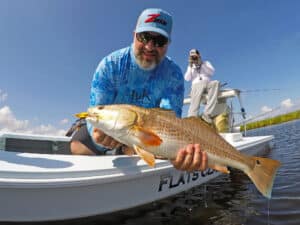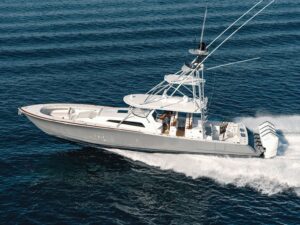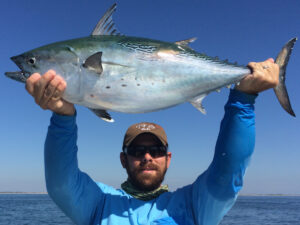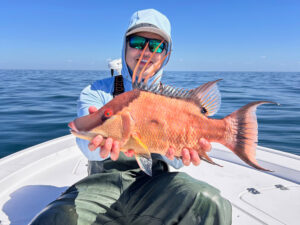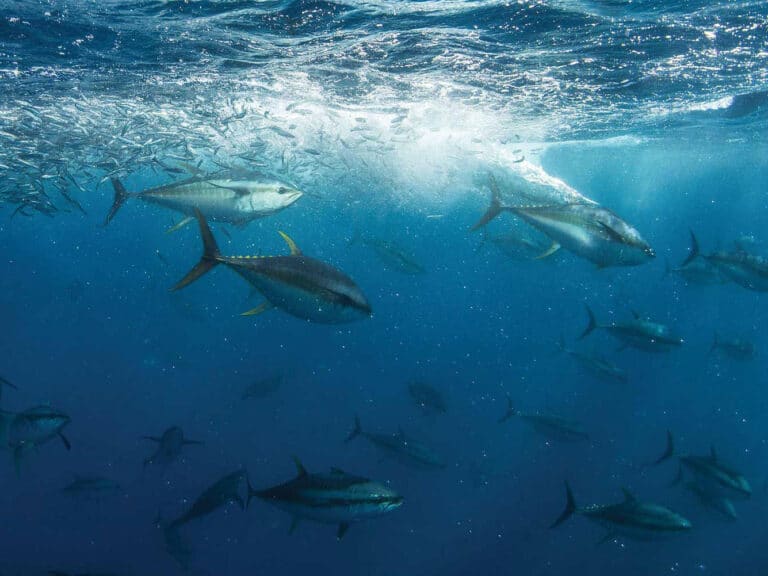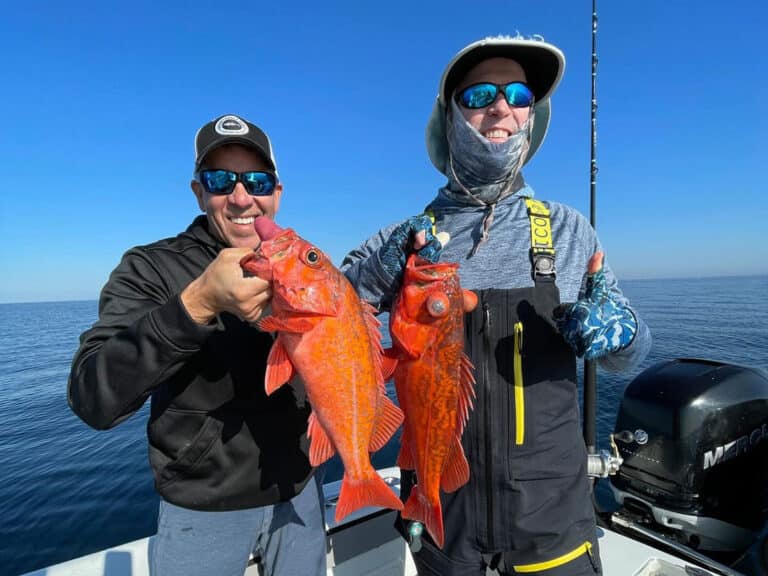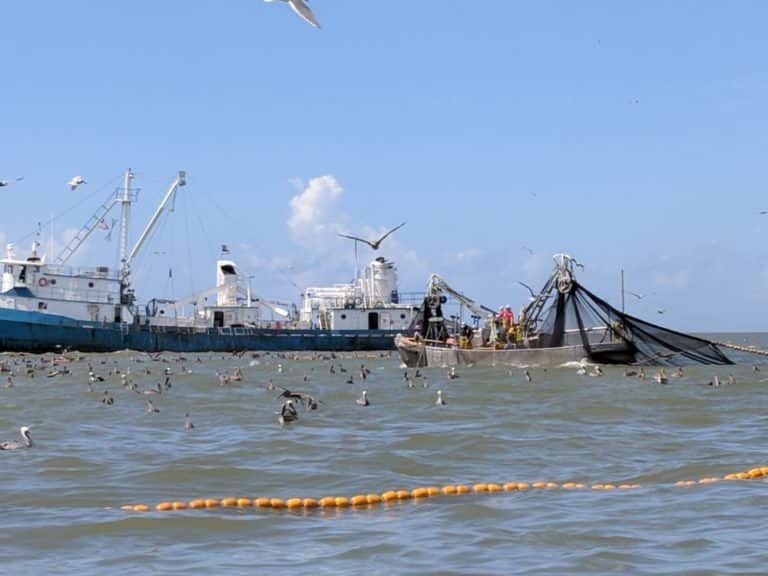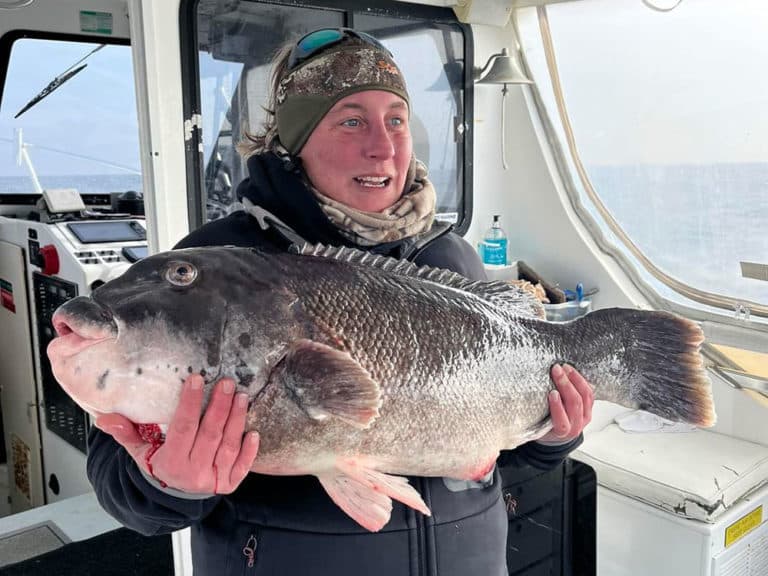
One reason why licensing laws remain more relaxed for boaters compared to car drivers might simply be that boats are easy. On a single-engine outboard boat, a wheel and a throttle control virtually all functions.
Waterways host less traffic than roads and offer fewer twists and turns. Boats are recreation; cars are transportation.
But as fun as boats can be, anglers should enhance their basic skills to boat more safely and economically. To help you do that, I asked five boat-handling pros to share their tips for running a variety of vessel types, from deep-V and stepped hulls to catamarans and skiffs.
Throttle Up
The first and most important step to take before throttling up: Make sure your crew knows what you’re about to do. Make sure they’re secure and prepared for takeoff.
Before accelerating, straighten your outboards and trim them down, says David Neese, Grady-White‘s vice president of product engineering. “On some boats, some people also put the trim tabs down so they don’t lose [view of] the horizon. With our hulls, you don’t need to do that.”
Trimming down the engines (or tucking them in, depending on how you prefer to describe it) lowers the bow and elevates the stern, lifting the boat out of the water more quickly. Trim tabs — standard on many offshore fishing boats — can further lower the bow on throttle-up, when needed.
Neese also suggests that in many cases, you don’t need to bury the throttles. “I like to come up without doing a hole shot,” he says. “I go about three-quarter throttle to get moving, though you do want to come up on plane quickly.”

Different hull designs require slightly altered routines. Capt. Chip Sheehan, of Chips Ahoy Charters in Boynton Beach, Florida, has run both deep-V and stepped-hull offshore boats. “My deep-V needed more trim to lift the boat,” he says. “A stepped hull doesn’t need as much trim; there’s less friction under the boat. The stepped boat gets on plane faster.”
Catamarans also plane more quickly than deep-Vs because they have greater displacement due to their twin sponsons. However, experts still suggest trimming down engines for the quickest hole shot.
Flatter-bottom skiffs can require a few more adjustments, depending on how shallow you’re fishing, how quickly you need to plane, and how the boat is equipped. Besides engine trim and trim tabs, skiffs often come with jack plates that elevate the engine so you can idle or power up in very skinny water.
“If you need to get on plane quickly in shallow water, and you need to lift that stern, put the tabs down a little,” says Charlie Johnson, marketing director for Maverick Boats. If your jack plate is elevated because of ultrathin water depths, trim down the engine and use less tab.

Cruising
Once your boat planes, you’ll want to make some adjustments. Often sea conditions and speed dictate exactly what to do. But in general, you should trim up the engines about a third to start, raise trim tabs, and throttle back to 3,500 to 4,000 rpm to find an optimal cruising speed.
Use your engine gauges — many outboard companies now provide you with mpg or gph information — to dial in the best fuel efficiency. Trim up or down slightly to tweak that number until you find the sweet spot. Trimmed properly, the front half of the boat generally should remain above the water’s surface.
Trim up too severely, and the boat can begin to porpoise — its bow bobbing up and down. If that happens, trim down slightly or tab down a tad. For the most part, in calm waters, trim-tab use should be reserved for leveling the boat when weight is unevenly distributed and one side rides lower than the other.
Experience also teaches you just how your boat runs with different loads. Pay attention to what feels right.
Does the boat feel sluggish? Does the bow seem too high or too low? When the bow is too low, the boat can feel like its front end is in control of steering (called, quite obviously, bow steering).
You’ll feel the difference when the trim is right, Neese says. “The boat will free up. The speed will increase and the mpg number will climb.”
At cruise, deep-V and stepped hulls again perform differently. “The stepped-hull form permits the hull to run at a single most optimal trim angle,” says Rob Kaidy, vice president of engineering for SeaVee Boats. “Meanwhile a conventional, prismatic hull will run at non-optimal trim angles at various speeds — with too high trim angles at low speeds and too low trim angles at high speeds. Both of these are detrimental to the performance and efficiency of the hull.”
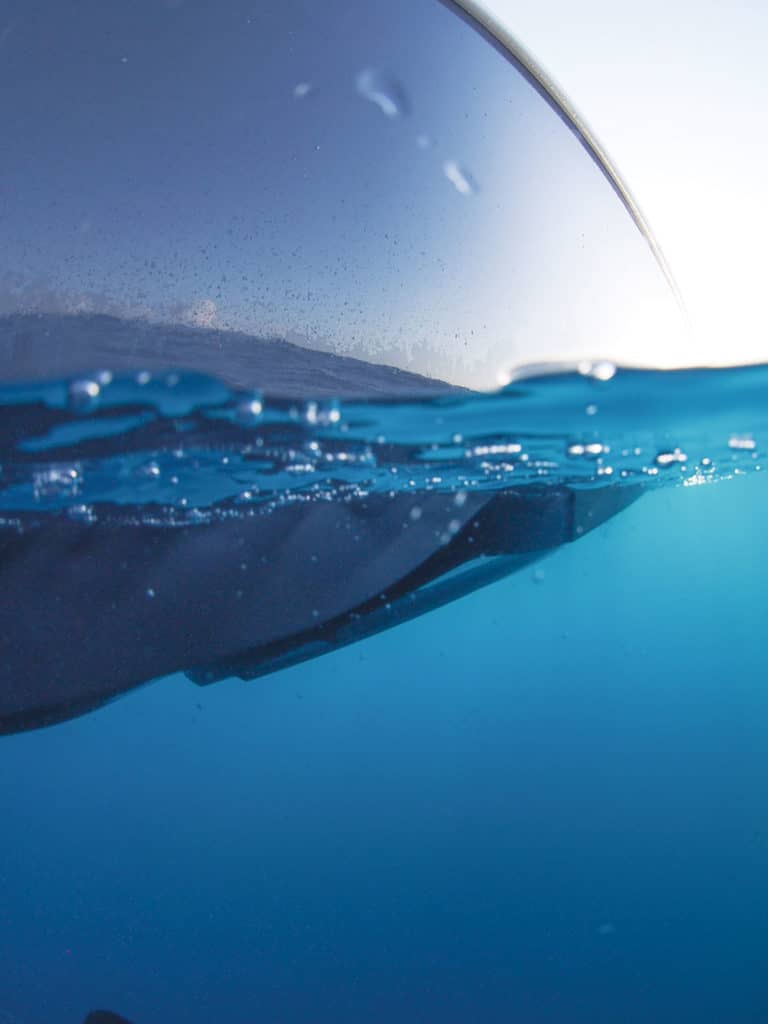
Stepped hulls break the planing surface into multiple, smaller planing surfaces and fixed centers of pressure, Kaidy explains. Stabilization of those pressure centers “causes the boat to trim at one angle regardless of speed when the boat is on plane.” Kaidy adds, “That’s the key to the ‘magic’ that is naval architecture and aerospace engineering of stepped hulls.”
When conditions allow you to run faster than cruise speed, you might find you need to trim up more dramatically. When Sport Fishing editors test boats for top speed, for instance, we generally bury the throttles and then start trimming out, lifting the props higher.
Often we won’t see 6,000 rpm until the engines are trimmed out fairly dramatically. At some point, speed peaks and, if you trim out further, begins to drop. Be careful not to trim so far that you enter the engines’ tilt mode. The hydraulic tilt arm on an outboard was not designed for the pressure of a running engine.
Today’s high gas prices should discourage most anglers who are not tournament-fishing from racing to a hot spot. Just because your boat can go 70 mph doesn’t mean it needs to.

Hard Turns
In most situations, you should not need to make hard turns in a fishing boat. Hard turns, particularly at high speeds, can catch passengers dangerously unaware, and if you’re not experienced running your boat, you could spin out or bury a gunwale.
Before making any turn, check all around the boat, including behind you, to avoid collisions with other watercraft. As a general rule of thumb, trim down engines going into a hard turn for a deep-V hull, and trim up engines for a stepped hull.
“I’ve learned that generally when I drive a boat, I’m looking hundreds of yards out in front, so I don’t have to go hard over,” says Capt. Art Sapp, of Native Son Fishing in Pompano Beach, Florida. Sapp has run several deep-V Sea Vees. “The few times I have turned hard, I never had any slip, especially with a traditional hull. If you can tuck in the engines a little to turn, you get more [hull] length in the water. If you feel the speed fade off, throttle up.”
Poorly designed stepped hulls — a more common condition decades ago — could “swap ends” in tight turns, spinning hard and throwing passengers to the deck in an instant. Because more air flows beneath the aft hull section, creating lift, stepped boats don’t run bow-high (as Kaidy pointed out above). With engines tucked in all the way, their bows generally ride even lower. Going into a turn, the bow section can catch, and the stern slides out.

Properly designed stepped-hull boats easily turn on a dime, though if you’re forced to turn sharply in a stepped boat, trim out engines a bit whenever possible.
On the other hand, with flat-bottom skiffs, trimming down the engine to prevent sliding can be critical, Johnson says. “Some guys drop the trim tab on the side they’re turning. If they’re turning right, they drop the tab on the starboard side.”
World Cat boats turn flat in slow turns, Wade says. “You feel the outside G-force. Then, the harder you turn into it, the more [the boat] leans like a monohull,” he says. “You can turn faster at 30 mph with a cat than with a monohull. A monohull will come off plane where a cat won’t.”
Handling Seas
When running into head seas, most captains choose to quarter the waves whenever possible. Even then, they use a few tricks to keep the ride dry and comfortable.
Obviously, the size of the seas makes all the difference in the world. But in general, says Neese, “With a head sea, I tab down to keep the bow from bouncing around. I like to keep the engines in their happy place as much as I can. So I don’t mess with trimming the engines. I’ll use a little tab to bring the bow down a little. Only if I start to get some cavitation do I tuck the engines in.”
Quartering seas can also create the potential for a wet ride. When the bow drops over a wave, it can splash in the trough. The wind can catch the spray and blow it aboard. That’s when most experts suggest high-siding the vessel, by tabbing down on the side opposite the wind. That keeps the hull higher on the windward side.
Working the throttle in a head sea, which means speeding up the face of waves and slowing as the vessel dips into a trough, can allow you to pick your way through rough seas at a decent speed, Sapp says.

On the other hand, while “everyone needs to run at their own comfort level,” Johnson says, “A common maxim is ‘seas up, throttle up,’ especially in a tight chop. Mavericks and Pathfinders are designed to run on top of the seas. There are a lot of situations where it can be more comfortable and drier to get on top and go a little faster, whether in a head sea or a following sea.”
If it’s really rough, he says, a lot of inshore anglers look for shallower water at the edges of bays, where the chop lightens. The route might take longer, but it can also save your back and knees.
Following seas present another challenge. Run too fast, and you risk stuffing the bow into the next wave. Some boats are more prone than others to bow-steer, particularly in following seas, so it’s important to raise the tabs and trim out the outboard to keep the bow up. Avoid the tendency to chop the throttle as the boat starts to fall into a hole between waves. Keeping the power lifts the bow; cutting power drops the bow, and it subsequently stuffs.
Catamarans trap water between the two hulls. That force keeps the bow from pulling one way or the other.
Close-Quarters Handling
A fishing boat with twin or triple outboards handles much more easily near the dock than a single-outboard vessel. Putting one engine in forward and one in reverse spins the multiengine boat fairly easily.
“The farther apart the engines, the better the control,” Neese says. “When possible, dock into the wind or current, not with it.”
The best advice is a rhyming phrase: Be a pro, go slow.
“Only go as fast as you want to hit the dock,” Sapp says, laughing. “Also, when backing, trimming the motors up 15 to 20 degrees gives you better control. That gives you more water under the boat rather than at the transom.”
Trial and Error
When you’re new to a boat, spend time putting it through its paces, and pay attention to how it feels and rides. If you have a friend with boating experience, ask him or her to teach you the ropes. You can even hire a fishing guide who runs a similar boat to offer pointers.
Most importantly, don’t overestimate your skills or underestimate the ocean. The ocean always holds the advantage.
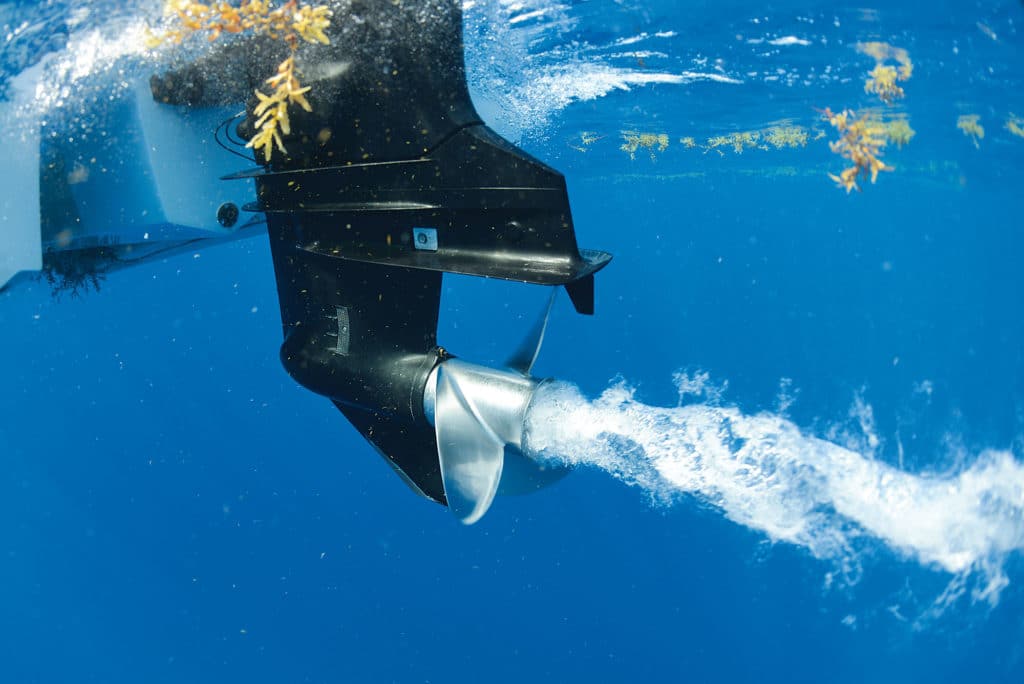
Prop Torque
Most single-engine outboards sport a propeller that turns clockwise, or to the right as you look at the transom. That motion makes the boat’s bow naturally move left and the stern move right, even when the outboard is perfectly aligned.
In some cases, the boat can actually list to the left and be tougher to turn to the right.
When backing, the stern of this single-engine boat naturally moves left. Occasionally, this prop torque combined with current or wind can keep a boat from backing to the right at all. Twin engines usually feature one clockwise-turning prop and one that rotates counterclockwise, thus negating prop torque.

